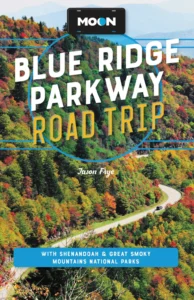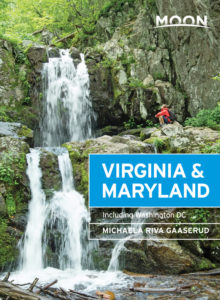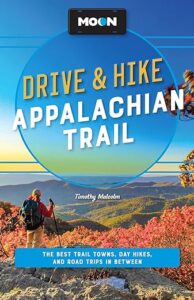Roanoke
Visiting Roanoke
Apart from Asheville at its southern end, Roanoke (pop. 99,920) is the only real city that can claim it’s actually on is the only real city that can claim it’s actually on the Blue Ridge Parkway. With block after block of brick-fronted business buildings, most of them adorned with neon, metal, and painted signs that seem unchanged since the 1940s, Roanoke contrasts abruptly with the natural verdancy of the rest of the parkway, but you may find it a welcome change after so many trees. Once a busy, belching, industrial Goliath supported by the railroads, Roanoke has evolved into a sophisticated, high-tech city—the commercial, cultural, and medical center of southwest Virginia.
Roanoke’s main visitor attractions lie right downtown in the Center in the Square (540/342-5700) complex, a restored warehouse that holds a wide variety of cultural offerings, including theaters, an African American culture museum ($8 adults), a kid-friendly science museum ($15 adults), and a local history museum ($6 adults). Also worth a look is the Virginia Museum of Transportation (303 Norfolk Ave. SW, 540/342-5670, daily, $10 adults), three blocks west of Center in the Square, which displays lots of old cars and trucks, steam and diesel locomotives, and horse-drawn carriages, plus a complete traveling circus—minus the performers, of course. Steam trains, as documented by Roanoke-based photographer O. Winston Link, are the real highlight of the museum. A short walk away, inside Roanoke’s streamlined 1930s-era Norfolk & Western Railroad passenger station, the new O. Winston Link Museum (101 Shenandoah Ave. NE, 540/982-5465, Tues.-Sat., $6 adults) displays more than 200 of the photographer’s indelible black-and-white images. There’s also a neat gallery devoted to the building’s legendary designer, Raymond Loewy, who created the Coke bottle, the logo for Lucky Strike cigarettes, and hundreds of other all-American icons.
On Mill Mountain, high above Roanoke, the 88.5-ft-tall (26.9-m) Roanoke Star shines nightly, lit by 2,000 ft (610 m) of red, white, and blue neon tubing. You can drive up to the base of it and get a grand view over Roanoke.
Southeast of Roanoke, the Booker T. Washington National Monument (540/721-2094) is a reconstructed plantation that includes the kitchen cabin where the influential African American leader was born. The 207-acre site, which also includes tobacco fields, is 20 mi (32 km) or so from Roanoke via Hwy-116 and Hwy-122.
Roanoke Restaurants and Lodging
Roanoke’s most popular place to eat is probably The Roanoker Restaurant (2522 Colonial Ave., 540/344-7746, Tues.-Sun.), “The Home of Good Food since 1941,” which serves traditional Virginia dishes, 2 mi (3.2 km) south of downtown off I-581 (Colonial Ave. exit). Another candidate for Roanoke’s favorite food is the Texas Tavern (114 Church Ave. SW, 540/342-4825), home of “World Famous Chili” and $1.75 cheeseburgers, and open daily 24 hours, seven days a week since 1930. There’s also the unexpected world-beat cuisine at Carlos Brazilian and International Cuisine (4167 Electric Rd., 540/776-1117) on a hilltop 4 mi (6.4 km) south of town. If you’re planning a picnic up in the mountains, be sure to stop first at the historic farmers market (free), downtown next to the Center in the Square and active since 1882.
Places to stay include the usual interstate motels, lined up along Orange Avenue (US-460). Oldest and best of these is the Hotel Roanoke (110 Shenandoah Ave. NW, 540/985-5900 or 866/594-4722, $139 and up), which has anchored downtown for over a century. Now managed as a Hilton, the hotel has outlasted the railroads that financed it. Even if you stay elsewhere, the lobby, with its Florentine marble floors and vaulted ceiling, is worth a look.
Floyd
The town of Floyd, west of the Blue Ridge Parkway, about an hour southwest of Roanoke, has only one stoplight, so it’s easy to find The Floyd Country Store (540/745-4563), which is famous for grilled cheese sandwiches, bowls of chili, and its weekly Jamboree ($8). Every Friday starting at 6:30pm, the display cases are pushed aside for an hour of gospel music, and then the floor is given over to bluegrass music, flat-footing, clogging, two-steps, waltz, square dancing, and shuffling feet.
Related Travel Guides
Virginia Travel Map

















